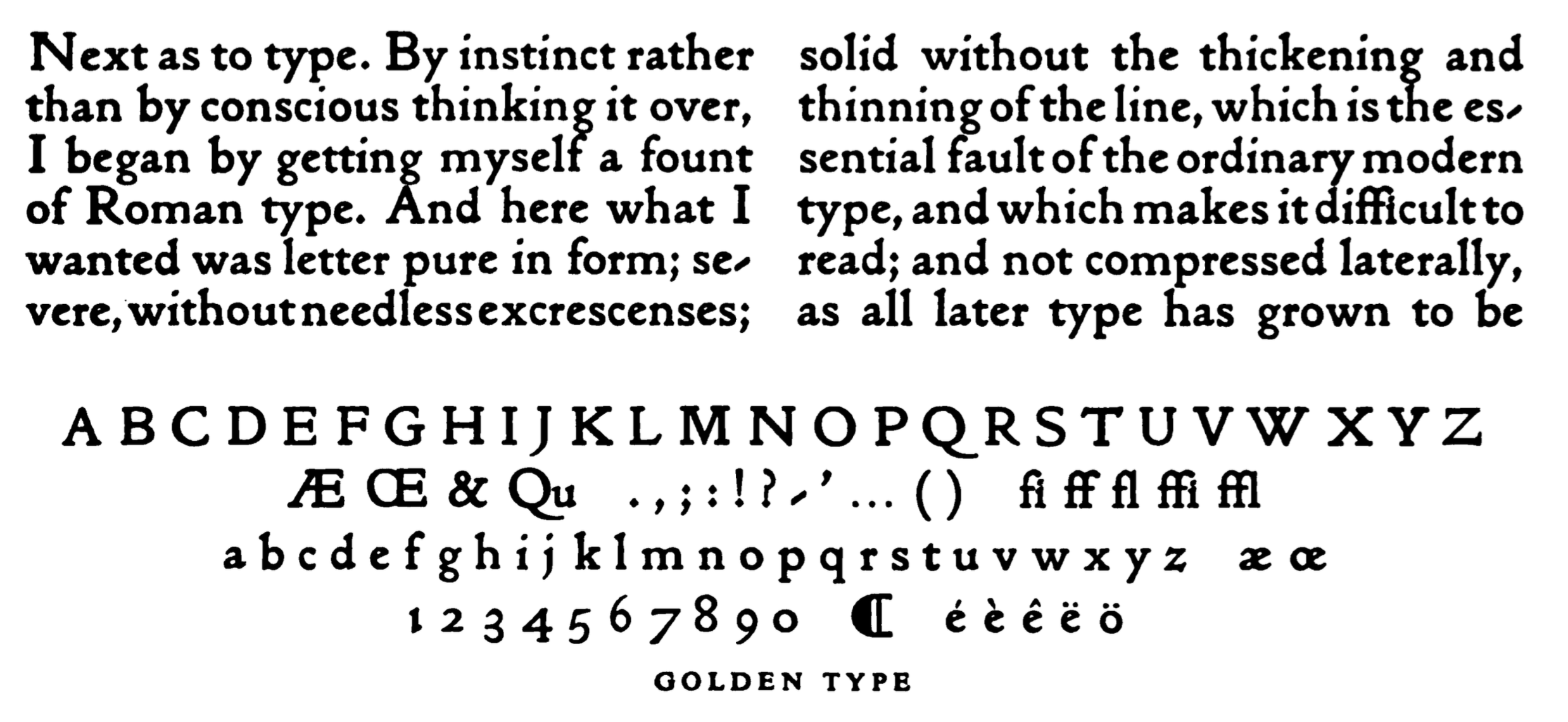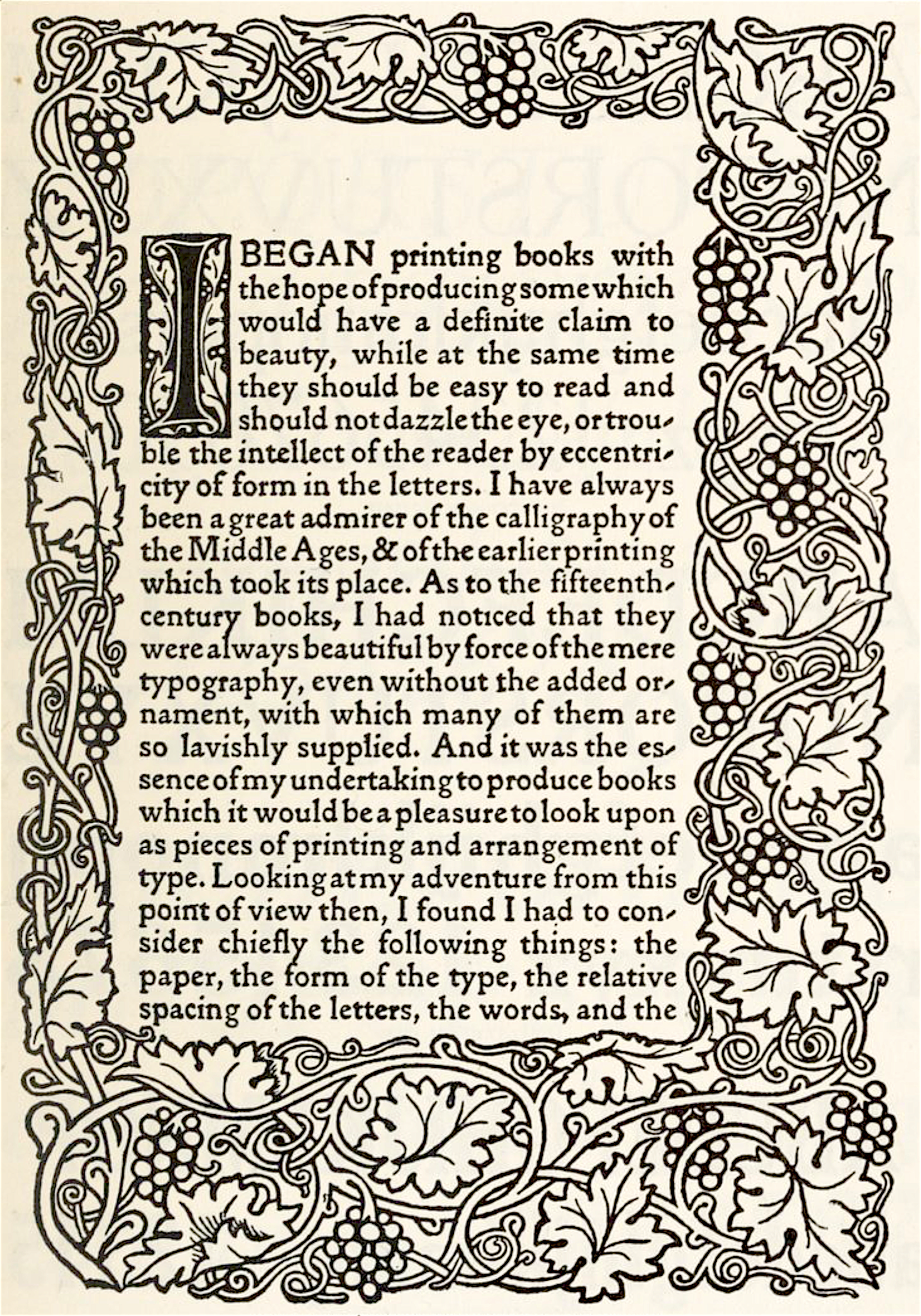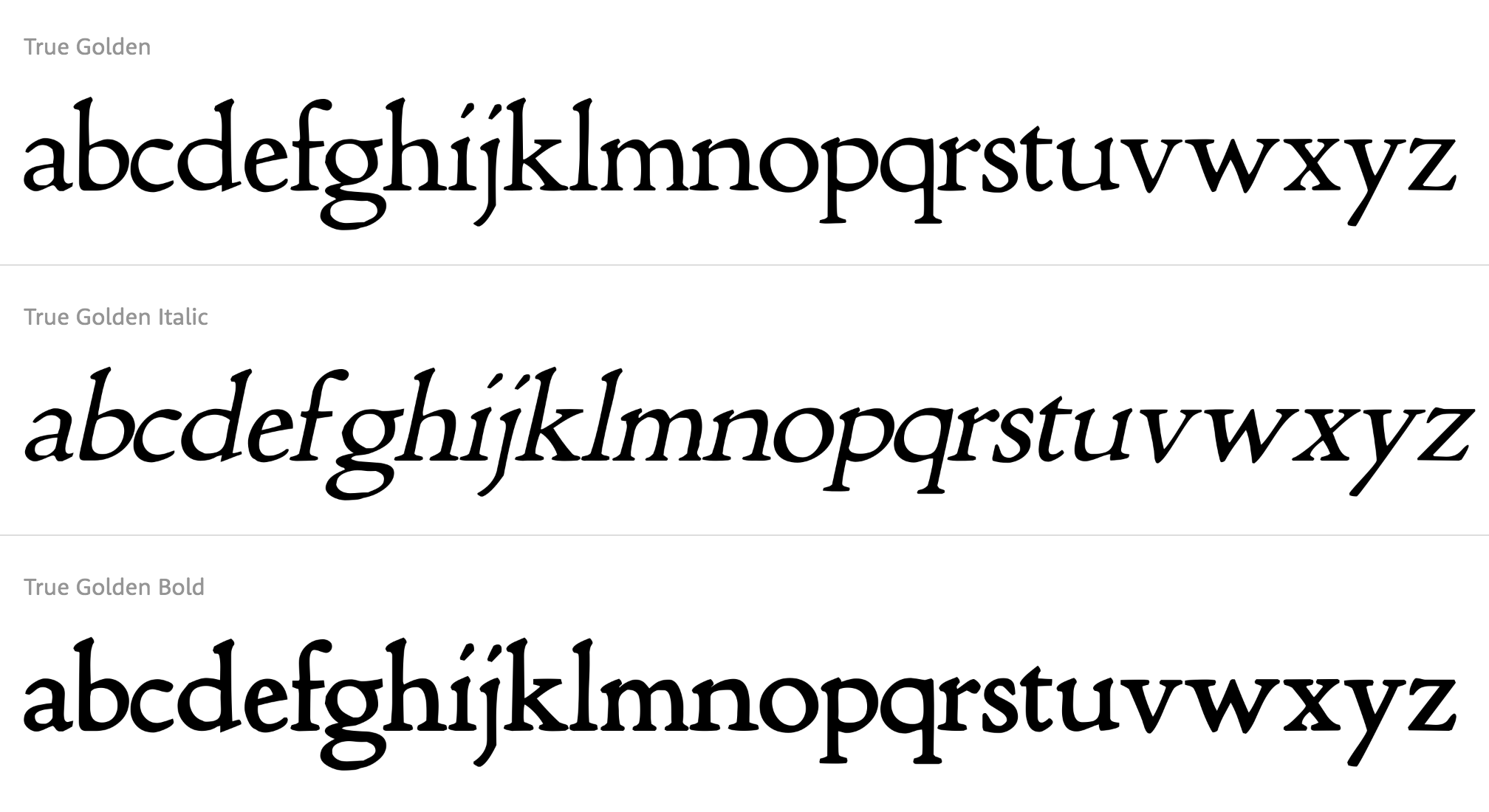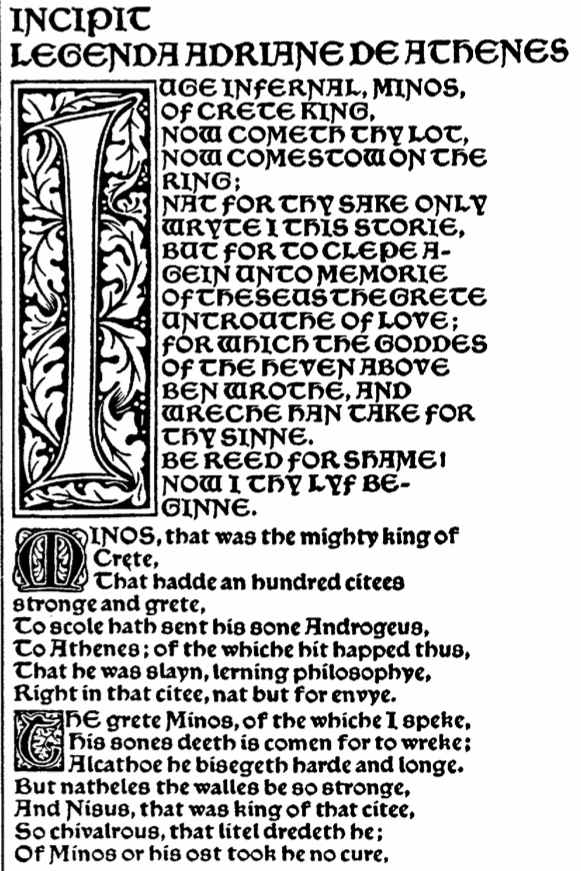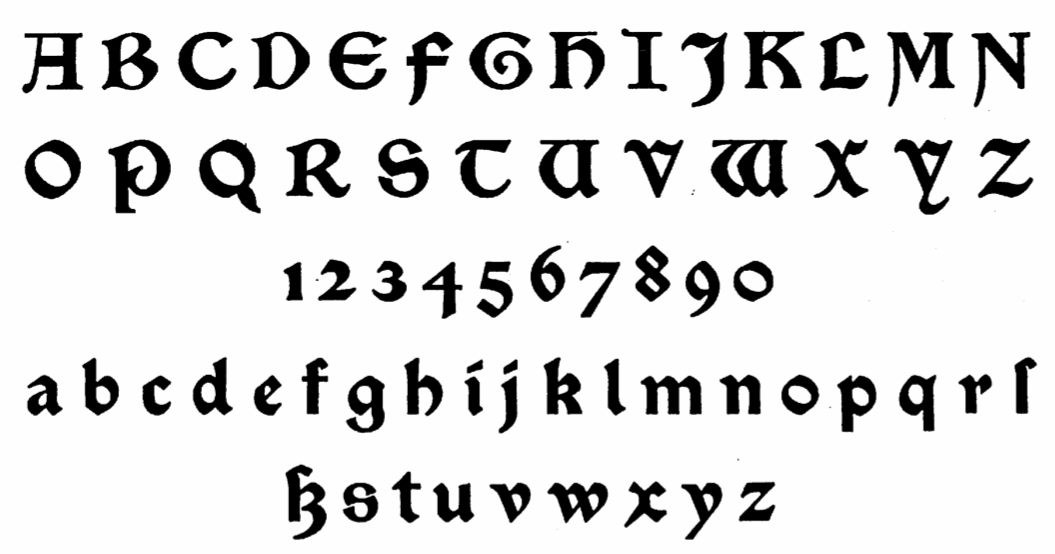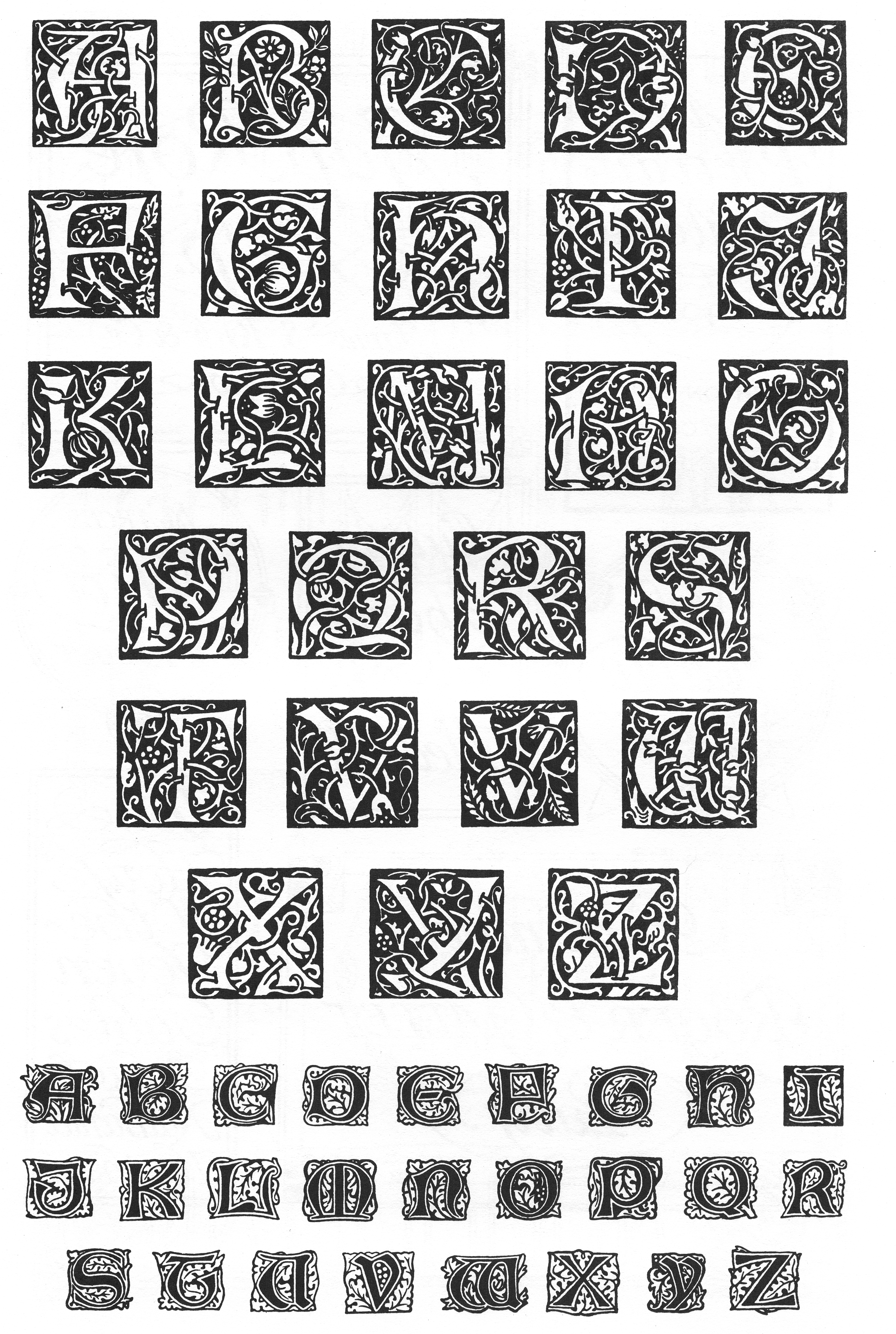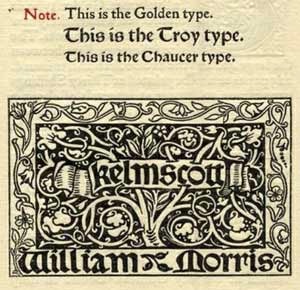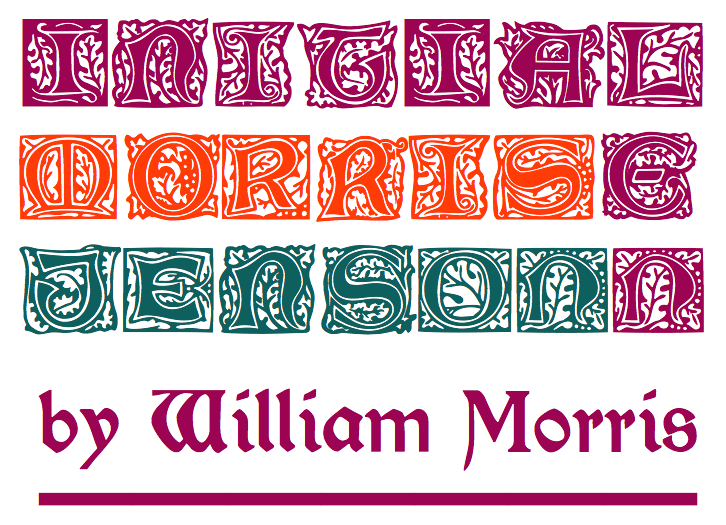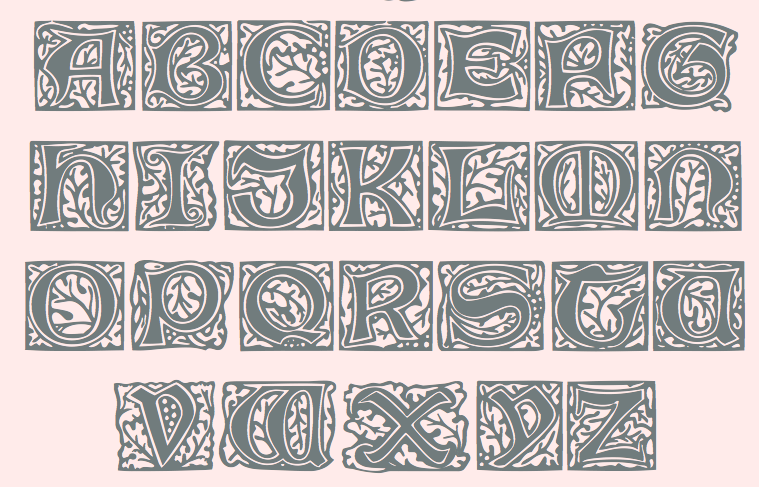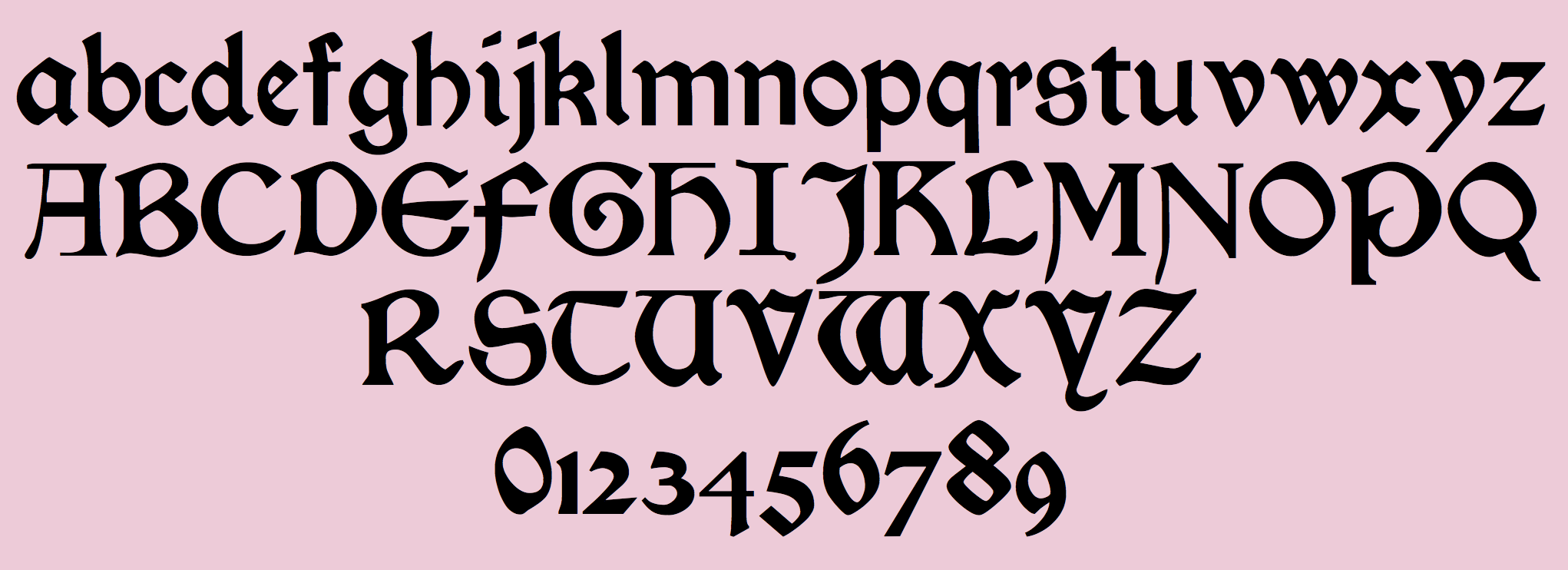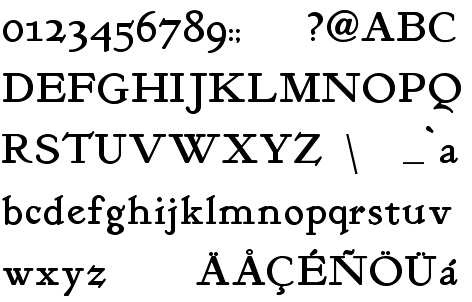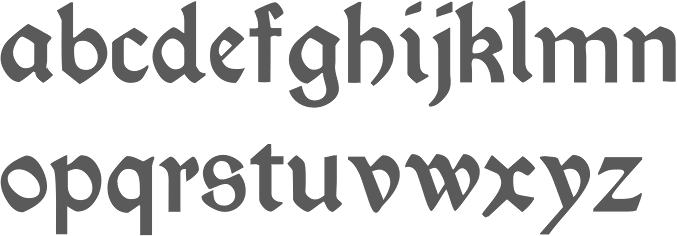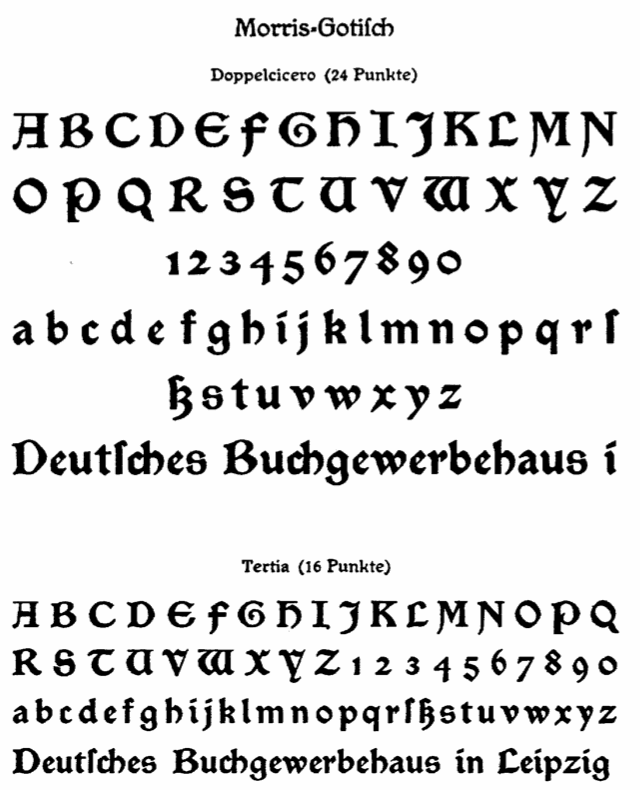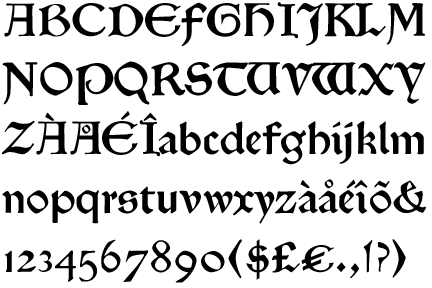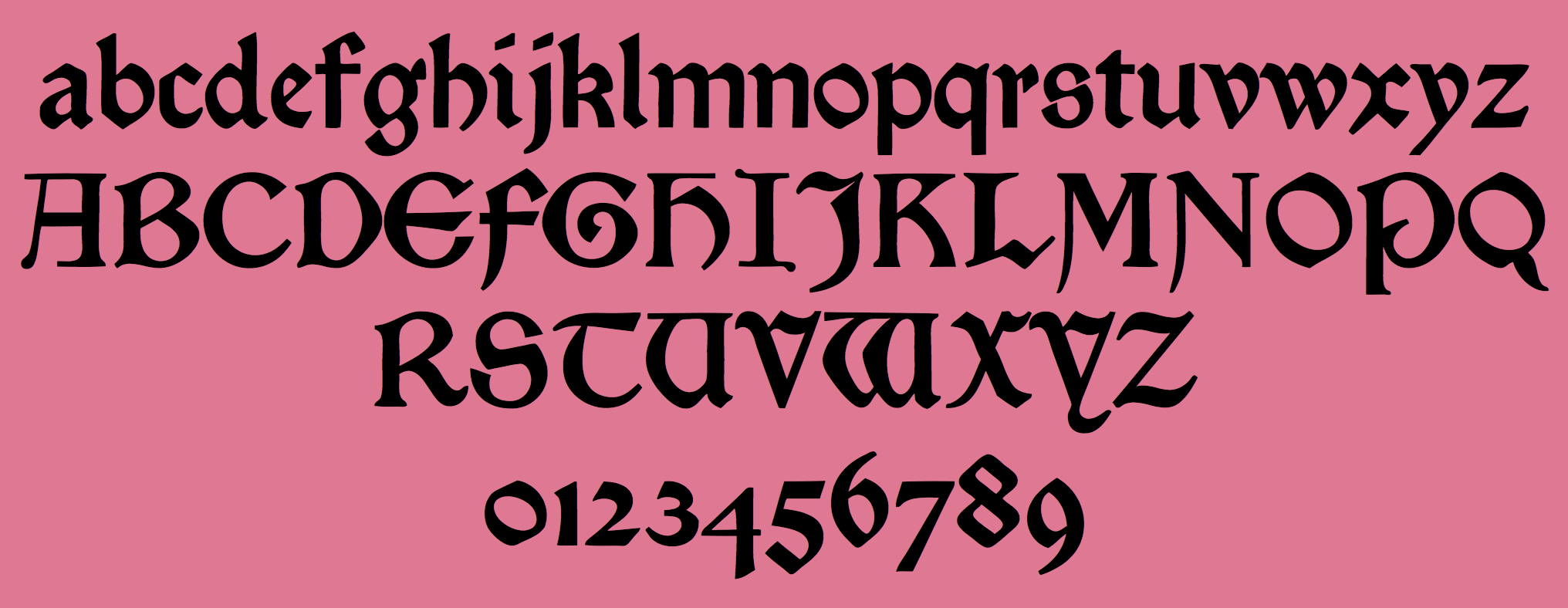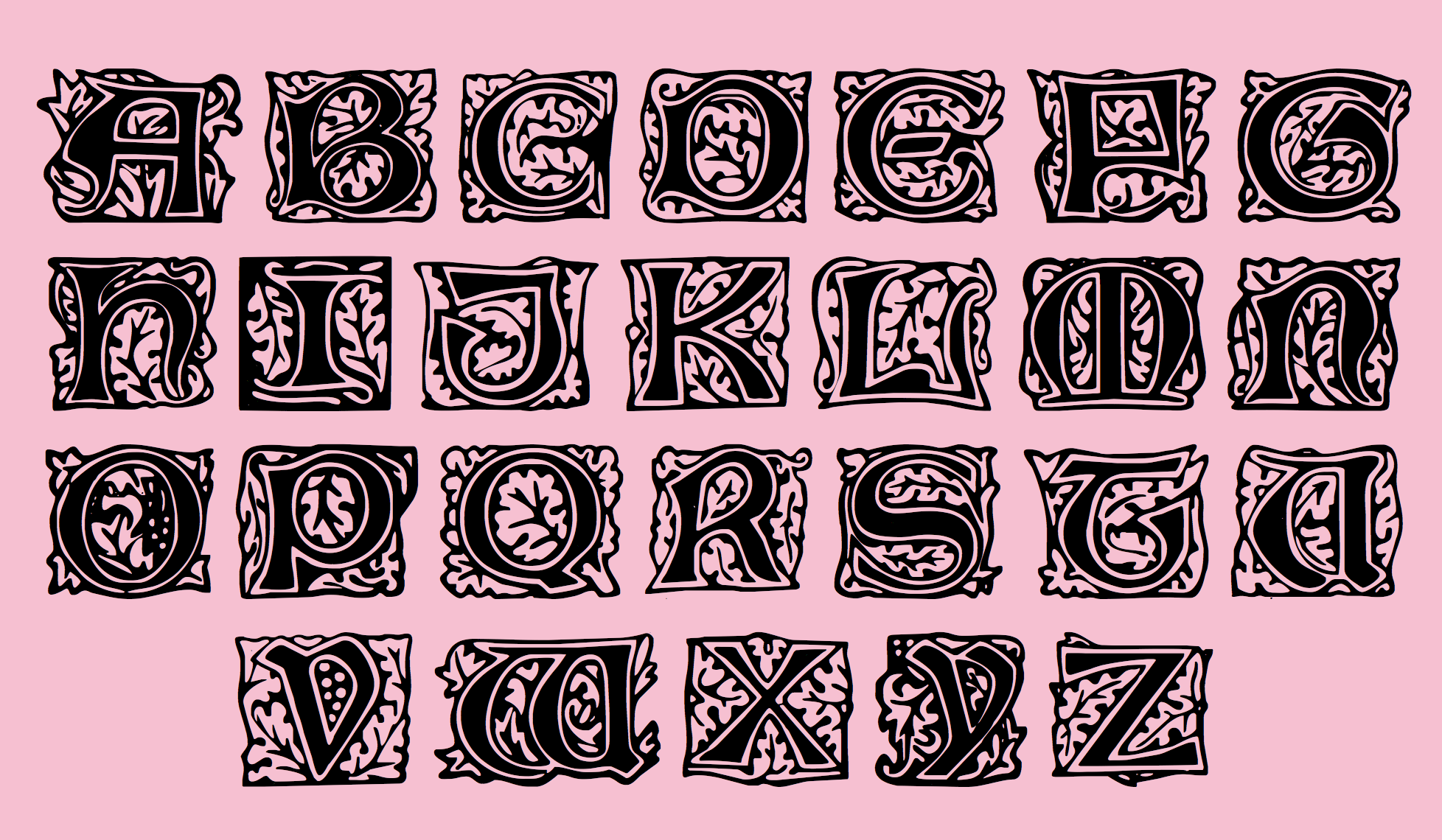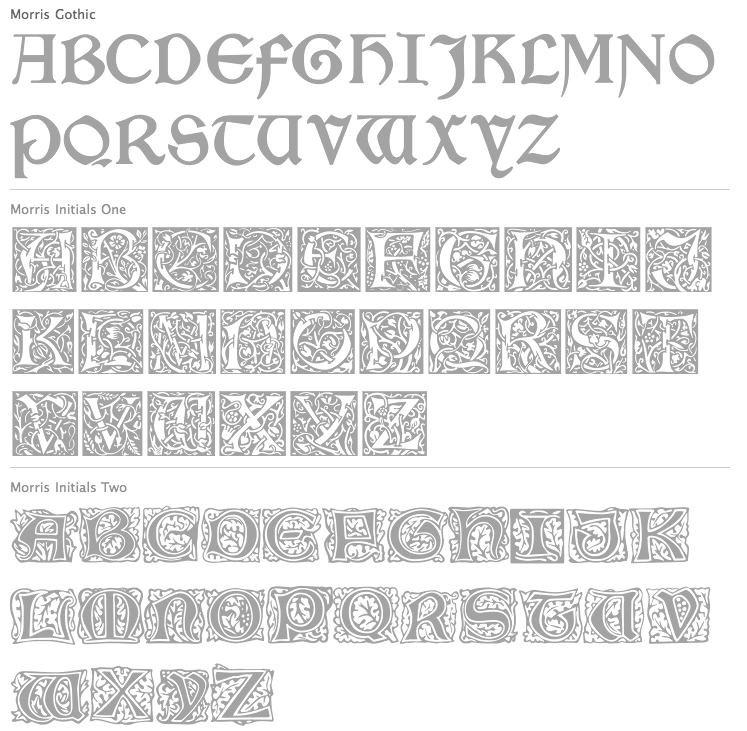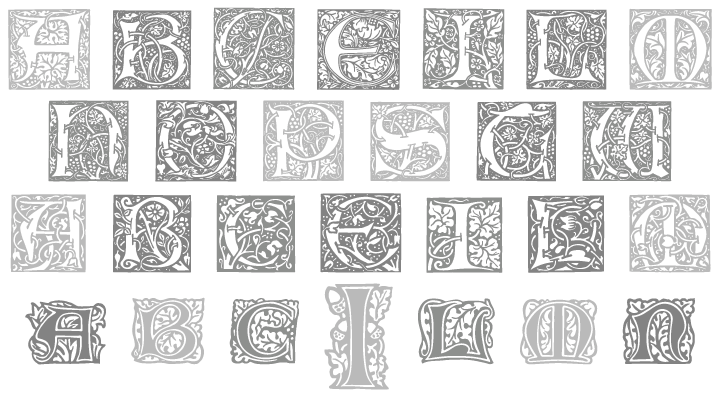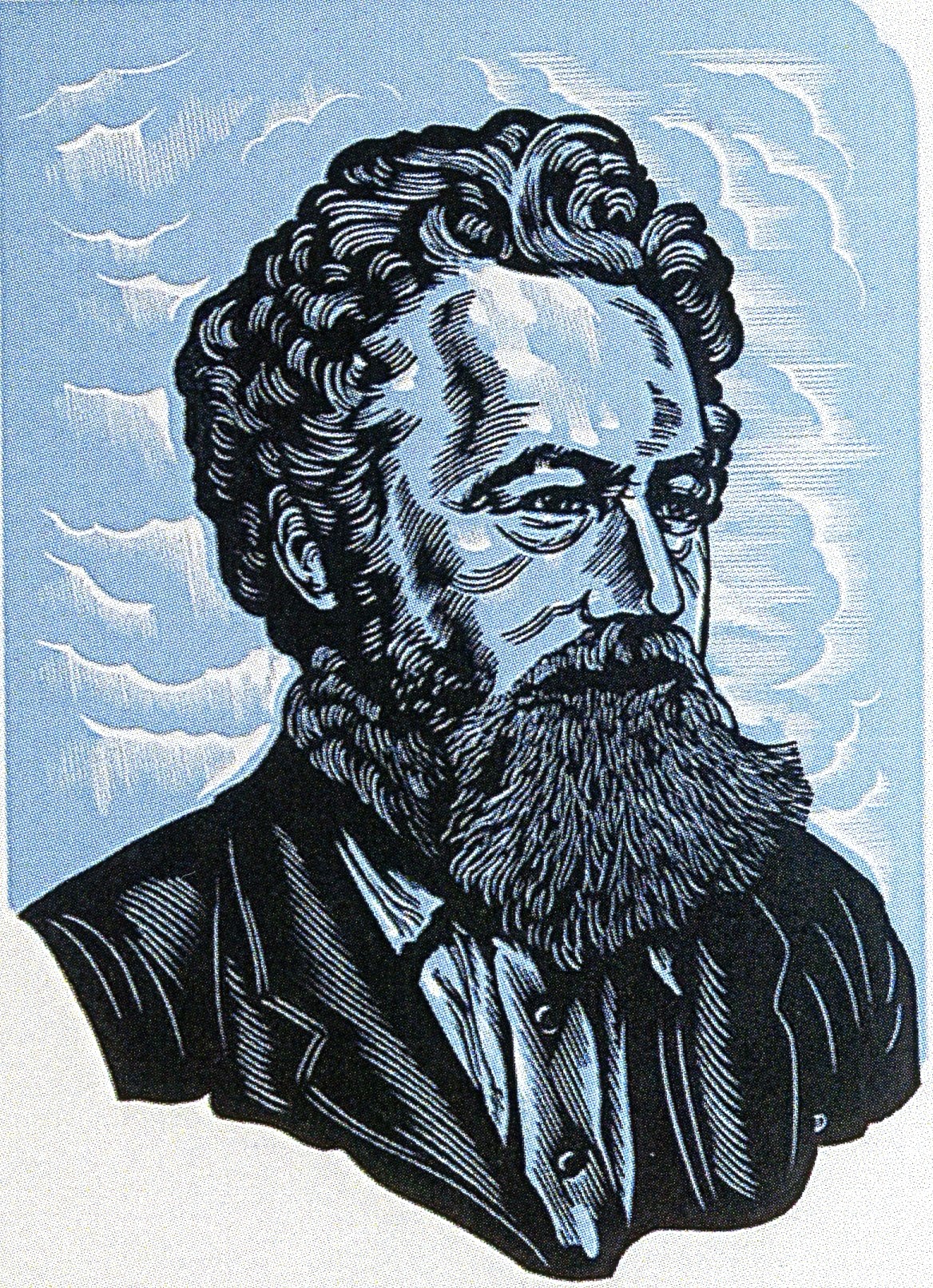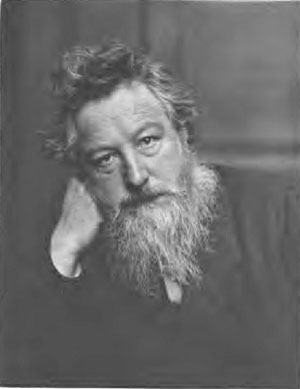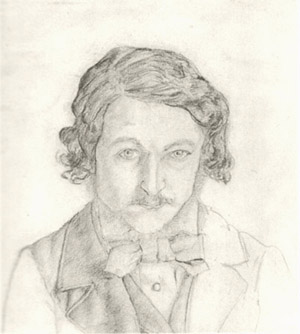|
William Morris
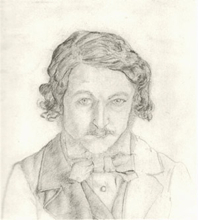
British type designer, architect and designer (b. Walthamstow in East London, 1834, d. 1896). Defender of the medieval form, he set up Kelmscott Press in 1891, and was one of the founders of the Arts and Crafts Movement. Morris was an artist, poet, writer and designer himself, but he is probably best remembered for his fabric designs and his book designs for Kelmscott Press, such as The Kelmscott Chaucer (1896). All his punches and matrices and some types are now with Cambridge University Press. William Morris's typefaces: - Kelmscott Golden or Golden Type (1889-1890): a bolder re-design of the classical Jenson face, done while he ran Kelmscott Press. The punches were cut by E.P. Prince. It was based on Nicolas Jenson but darkened. ATF's copy of this was called Nicolas Jenson, just before 1900. Morris used it in many of the books in the Kelmscott Press. Ancient Roman was Keystone Type Foundry's adaptation in 1904 of the Golden type [Mac McGrew deems it comparable to Jenson Oldstyle]. All matrices, punches and some of the types are in possession of Cambridge University Press. Digital versions include GoldenType (Elsner and Flake), GoldenType ITC (ITC), Kelmscott Roman (Nick Curtis), Kelmscott (Scriptorium), True Golden (Scriptorium), URW GoldenType (URW), URW GoldenTypeITC (ITC).
- Troy (1891-1892): blackletter. Called Morris Gotisch, it was published by Berthold in 1903. Multiple digital versions exist: GL Morris (2017-2018, Gutenberg Labo, a free version), P22 Morris Troy (2001, Richard Kegler), Joyeuse (1992, Scriptorium: a variation), Morris Gothic and Morris Initials (Tom Wallace), Troy3Roman (Chet Gottfried), MorrisBlack (Dan Solo), Satanick (Marty Snyder), an unnamed revival by Eliana Ferreira (2010), Kelmscott (Scriptorium), Morris Gotisch (Gerhard Helzel), MorrisBlackLetter (Scriptorium), MorrisRoman (Dieter Steffmann), Troycer (Torbjörn Olsson).
- Chaucer (1892): an enlargement [in the sense of point size only!] of Troy. Wetzig mentions the date 1897. For a digital version, se Alter Littera Chaucer (2012).
- Morris Romanized Black. Mac McGrew: Morris Romanized Black is an adaptation of the Troy and Chaucer types designed by William Morris for his Kelmscott Press. This adaptation first appeared under the name Tell Text about 1895, and was renamed in 1925. Troy and Chaucer were two sizes of one style, approximately 18- and 12- point respectively. William Morris had previously designed a roman type which became popular commercially as Jenson Oldstyle (q.v.); of this design he says, "After a while I felt that I must have a Gothic [in the sense of Blackletter or Old English] as well as a Roman, and herein the task I set myself was to redeem the Gothic character from the charge of unreadableness. ... Keeping my end steadily in view, I designed a blackletter type which I think I may claim to be as readable as a Roman one, and to say the truth, I prefer it to the Roman." Compare Satanick. For digital versions, refer to the digital interpretations of Troy.
- Jenson Oldstyle, Morris Jensonian, Morris Old Style. Well, not really---Mac McGrew explains: Jenson Oldstyle, though a comparatively crude typeface in itself, did, much to start the late nineteenth-century move toward better types and typography. Designed by J. W. Phinney of the Dickinson Type Foundry (ATF) and cut by John F. Cumming in 1893, it was based on the Golden Type of William Morris for the Kelmscott Press in 1890; that in turn was based on the 1470-76 types of Nicolas Jenson. Morris had established standards for fine printing, in spite of the fact that he did not design really fine types. Serifs in, particular are clumsy, but the Jenson types quickly became popular. BB&S introduced Mazarin in 1895-96, as "a revival of the Golden type, redesigned by our artist." But it was a poor copy, and was replaced by Morris Jensonian. Inland's Kelmscott, shown in 1897, was acquired by BB&S and renamed Morris Jensonian in 1912; Keystone had Ancient Roman (q. v.); Crescent Type Foundry had Morris Old Style. Hansen had Hansen Old Style (q. v.); and other founders had several other typefaces, all nearly like Jenson. It is hard to realize that Jenson was inspired by the same historic type as the later and more refined Centaur, Cloister, and Eusebius. ATF spelled the name "Jensen" in some early specimens, and added "No. 2" to the series, the latter presumably when it was adapted to standard alignment or when minor changes were made in the design. Jenson Italic was introduced at the same time as the roman. ATF advertised Phinney's Jenson Heavyface in 1899 as "new and novel-should have been here long ago." Jenson Condensed and Bold Condensed were introduced in 1901.
- Morris Initials: illuminated capitals in the Kelmscott edition of Chaucer's works at the Kelmscott Press. Digital versions: Morris Inits (George Williams), Chaucerian Initials (Scriptorium), Morris Initials (Scriptorium), Morrisinits (Dieter Steffmann), William Morris Initials (2018, Chafomon). The Morris Jenson Initialen font by Typograf (2015) is somehow different.
Self portrait, 1856 and picture, age 53. William S. Peterson writes on Morris. FontShop link. MyFonts link. Bio by Nicholas Fabian. Reference books include Typophile Chapbook: The Kelmscott Press, 1891 to 1898 (William Morris), and The Cambridge University Press Collection of Private Press Types, Kelmscott, Ashendene, Eragny, Cranach (Thomas Balston, 1951; inscribed by Adrian Wilson to Bob&Jane Grabhorn). William Morris himself wrote The Art and Craft of Printing (1895, Kelmscott Press) in which he explains his aims in founding the Kelmscott Press. Ebook version of the latter book. View typefaces by William Morris, and historical descendants.
|
EXTERNAL LINKS
William Morris
 [Designer info] [Designer info]
Dafont page
Behance page
MyFonts search
Monotype search
Fontspring search
Google search
INTERNAL LINKS
Type designers ⦿
Type designers ⦿
Ornamental caps typefaces ⦿
Blackletter fonts ⦿
Arts and Crafts Movement ⦿
Type design in the United Kingdom ⦿
Venetian or antiqua typefaces ⦿
Books on type design ⦿
Wood Type ⦿
Dieter Steffmann ⦿
|

